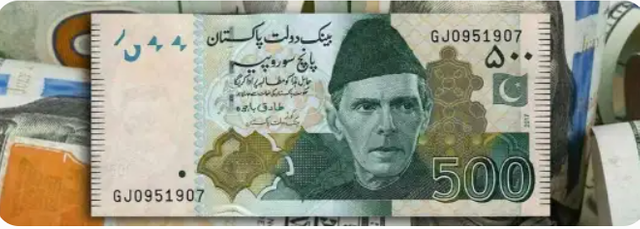Introduction:

In recent times, the Pakistani rupee has shown resilience and gained ground against the US dollar, marking a positive shift in the country's economic landscape. This development has caught the attention of investors, economists, and individuals alike, as it signifies potential improvements in trade, investment, and overall economic stability. In this blog post, we will explore the reasons behind the Pakistani rupee's score gain against the US dollar, its implications for the country's economy, and the factors contributing to this positive trend.
Understanding the Rupee's Score Gain:
The exchange rate between the Pakistani rupee and the US dollar is a crucial indicator of a country's economic health and its ability to attract foreign investment. In recent months, the Pakistani rupee has displayed a commendable performance, strengthening against the US dollar. This score gain reflects increased confidence in Pakistan's economic prospects and provides a favorable environment for both domestic and international investors.
Factors Contributing to the Rupee's Strength:
Improved Economic Indicators:
Pakistan has witnessed notable improvements in key economic indicators, including export growth, remittances, and foreign exchange reserves. These positive trends have bolstered investor confidence, leading to increased demand for the Pakistani rupee.Effective Monetary Policy:
The State Bank of Pakistan's proactive approach in managing monetary policy has played a significant role in stabilizing the currency. By implementing prudent measures and maintaining an appropriate interest rate, the central bank has effectively curbed inflationary pressures and supported the rupee's strength.Foreign Investment Inflows:
Foreign investment plays a crucial role in driving economic growth and currency stability. Pakistan has seen a surge in foreign investment, particularly in sectors such as energy, infrastructure, and technology. This influx of foreign capital has bolstered the demand for the rupee, leading to its score gain against the US dollar.
Implications for the Economy:
The strengthening of the Pakistani rupee against the US dollar has several positive implications for the country's economy:
Import Cost Reduction:
A stronger rupee means reduced costs for importing goods and commodities, benefiting both businesses and consumers. This decrease in import costs can contribute to lower inflationary pressures and improve the purchasing power of the population.Export Competitiveness:
While a stronger rupee may make imports cheaper, it could potentially pose challenges for exporters. However, the government and relevant authorities can leverage this opportunity to enhance export competitiveness by implementing policies that support export-oriented industries.Investor Confidence and Economic Growth:
The rupee's score gain signifies improved investor confidence in Pakistan's economic prospects. This renewed confidence can attract further foreign direct investment, stimulate economic growth, and create job opportunities for the population.
Conclusion:
The Pakistani rupee's score gain against the US dollar reflects positive economic developments and increased investor confidence in the country's potential. Factors such as improved economic indicators, effective monetary policy, and foreign investment inflows have contributed to the rupee's strength. While this trend brings benefits such as reduced import costs and enhanced investor confidence, it is crucial for policymakers to ensure a balanced approach that supports both importers and exporters. By fostering a stable and resilient economy, Pakistan can continue on its path towards sustainable economic growth and prosperity.